Byproducts of a Bygone Era (Chandeliers, Mountains, and the Echoes of Places That Refuse to Die)
A road trip meditation on grand hotels, personal history, and one unforgettable place in the Rockies.
I come from the Borscht Belt.
Not just geographically. Not just culturally. I mean origin story stuff. I mean: I wouldn’t even be here if it weren’t for that strange, beautiful, fading world of Jewish resorts that once dotted the Catskills.
My grandfather met my grandmother because of it. Her family ran a hotel —nothing big, but big enough to need help. They had my father there, in between guests and linen changes and dinners served family-style. When the hotel burned down—as so many of them eventually did. My uncle didn't didn’t give up. He started a campground.
 |
| A postcard from the post war family hotel |
Meanwhile, on the other side of the State, my mother’s family was living their own story. They were campers. One summer, they rolled up to that very same campground. My mom met my dad somewhere between a bonfire and the bathhouse. That’s how it happens. That’s how I happened.
So when I say I have a deep, almost instinctual affinity for old hotels, I’m not speaking metaphorically. It’s not just a love of architecture or nostalgia for textured wallpaper. It’s in my blood.
Ghost Roads and Ghost Resorts
Growing up, my Pops could drive down almost any old road in Sullivan or Ulster County and point to a collapsed porch or a stone wall covered in vines and say, “That used to be a hotel.” He wasn’t being poetic. He was being accurate. He would tell me stories about how if you hustled all summer as a waiter you could buy a brand new car or put yourself through med school.
There used to be hundreds of them—thousands, if you count every boarding house and bungalow colony.
And do you know why there were so many Jewish hotels in the Catskills?
Because they all started out as farms. Jewish immigrants, mostly from Eastern Europe, tried to work the land. But farming on the side of a mountain turned out to be tough. Still, the city was overcrowded, filthy, and full of disease—especially tuberculosis back then. So they sold what they could: clean air, sunshine, fresh eggs, and maybe a swimming hole.
At the time, there were plenty of signs that said No Jews Allowed, so they built their own spaces. A couple of paying boarders here, a few more the next summer. Sometimes they gave the boarders the house and moved into the barn themselves. Not even joking.
It started with milk and ended with mambo lessons.
And for decades, it boomed. The Pines. Grossinger’s. The Nevele. Kutcher’s. Brick archways. Marble lobbies. Ice skating rinks and orchestra pits and comedians testing material before they hit Ed Sullivan.
I was born long after the golden years, but the ghosts were still hanging around when I was a teenager with a driver’s license. I used to cruise those roads, windows down, and explore what was left—giant moss-covered pools, sagging ballrooms, broken pianos in empty lobbies. I always thought I’d write a photo book called Byproducts of a Bygone Era. I never did. Most of those places either burned down, fell down, or got swallowed up by the woods.
But I still feel the pull.
A Temple in the Rockies
That’s probably why I had to see The Broadmoor when I found myself in Colorado Springs.
You wouldn’t know it was there at first. You have to drive toward the mountains, around a curve, past the manicured hedges and perfectly placed pine trees. And then suddenly—it opens up in front of you like something out of a dream. A pink stucco palace rising beside a mirror-glass lake, with the Rockies towering behind it like a painting that forgot it wasn’t supposed to move.
The Broadmoor isn’t just some fancy hotel—it’s deliberate excellence. Built in 1918 by Spencer Penrose, who wanted nothing less than the finest hotel in America. And he damn near did it.
He hired Warren and Wetmore—the same minds behind the Ritz-Carlton and the Biltmore. He brought in Frederick Law Olmsted Jr. (yes, the son of the guy who designed Central Park) to shape the 3,000-acre landscape. Every tree feels like it belongs. Every flowerbed looks hand-painted. Every path gives you something beautiful at the end of it.
They imported a full English pub—disassembled it brick by brick, shipped it across the Atlantic, and rebuilt it here. They filled the halls with European and Far Eastern antiques, massive oil paintings, chandeliers like constellations. Donald Ross designed the first golf course—highest elevation course in the country at the time. Robert Trent Jones Sr. did the second.
Even George W. Bush had a moment of reckoning here. Woke up hungover in the summer of 1986, took in the view, and decided to quit drinking. The Broadmoor has that effect. You look out one of those tall arched windows and start seeing your life in chapters.
Wandering the Cathedral
I asked the bellhop if I could take a look around. Told him I wasn’t trying to order anything, just wanted to see. He smiled like he’d heard it before, nodded toward the lobby and said, “Go ahead.”
I wandered for over an hour, and every time I thought I’d seen the most beautiful thing, I turned a corner and found something even more stunning. A spiral staircase glowing with natural light. A hallway with gold-trimmed doors and velvet chairs. A painting the size of a van, just casually hanging between sconces.
The ceilings! Hand-painted. Coffered. Etched. Curved. Textures and tones that made the whole place feel like the inside of a Fabergé egg.
Even the air felt different. Like it had been filtered through mountain snow and old money.
Outside, the lake reflected the building like a storybook illustration. You could hear the soft clink of wine glasses from a terrace café and the muffled sound of piano music through the French doors. Couples in linen. Kids feeding ducks. Every flower was perfect. Not just blooming—vibrating with color. I’ve never seen begonias look that confident.
Why It Mattered
I think the reason The Broadmoor hit me so hard is because it reminded me that not everything beautiful has to be gone. Not every great thing has to collapse under moss and mildew. Some things survive. Some people take care. Some visions are built strong enough to outlast trends and decades.
And maybe, in some small way, seeing a place like that reconnects me to the ghosts I’ve been carrying all along. Those dusty Catskill ballrooms. The stories my Pops told. The porch where my grandmother sat, towel around her shoulders, watching her guests dance to some saxophone under the stars.
This was never just about architecture. It was never just about old hotels.
It’s about lineage. About memory. About what we pass down—and what we preserve.
Next Time, With Jamie
I wish Jamie had been there with me.
Next time, she’ll be with me. Because places like this aren’t meant to be admired alone. They’re meant to be shared. Touched. Remembered.
Somewhere between the Borscht Belt and the Rockies, between the boarded-up porches of my youth and the blooming grandeur of The Broadmoor, I realized something:
I’ve spent most of my life chasing the ruins of what used to be…
But once in a while, you find something still standing—still shining—
something that didn’t burn down or fall apart.
And when you do, you stop.
You breathe it in.
You look around and say,
‘So this is what it feels like when someone refuses to let beauty die.’
That’s The Broadmoor.
And that’s the part of me that will never stop looking for the next grand hallway,
the next carved balustrade,
the next whisper from the past
that says,
Welcome back.
_____________________________________
Nate’s Note:
I’m not a professional photographer—let’s just get that out of the way. I mean, sure, technically I am a photographer because I carry a camera (or a phone) and I point it at things. But if you’re looking for talk about apertures, exposure levels, or composition rules… well, I’m not your guy.
What I do have is a deep love for the things that catch my eye—textures, light, history, contrast, character. I don’t always get the perfect shot, but I try to focus on what draws me in and trust that some of that wonder makes its way into the frame.
When the subject is beautiful enough, it’s almost impossible to screw it up.
I hope these photos give you even a sliver of what I felt being there. Thanks for taking a look.



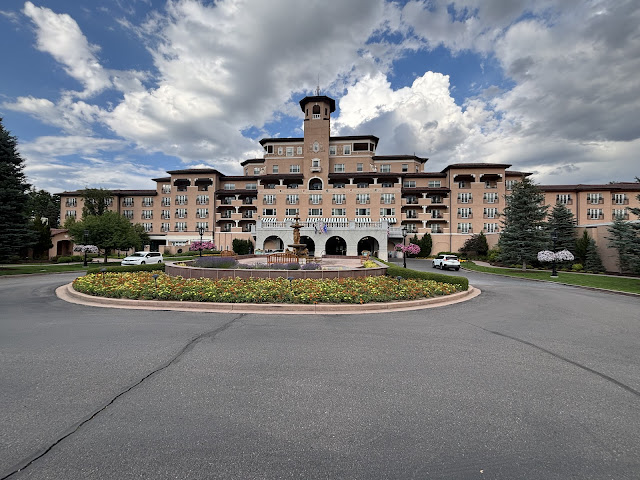





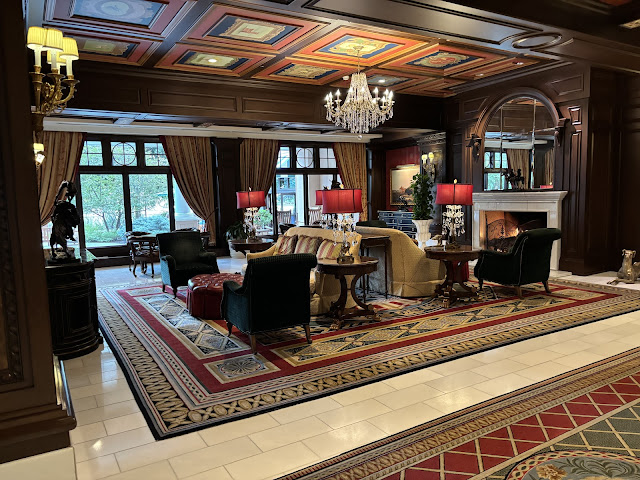




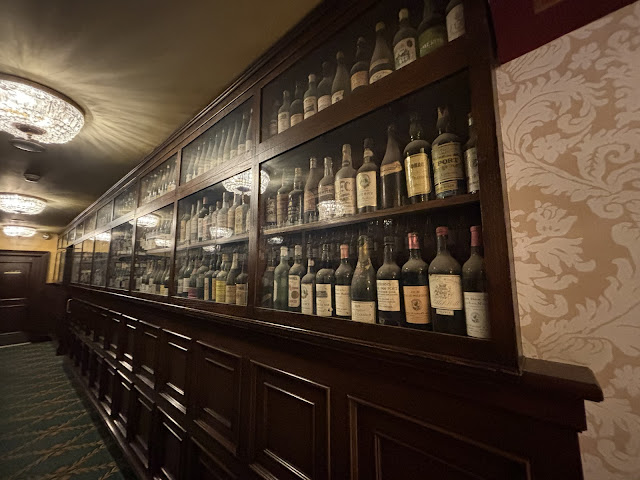
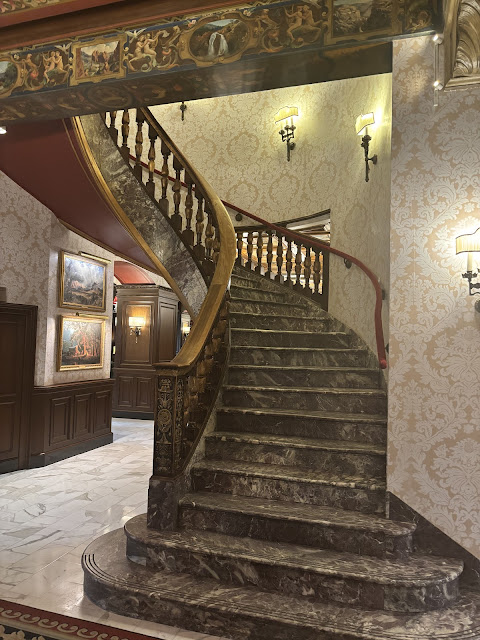






















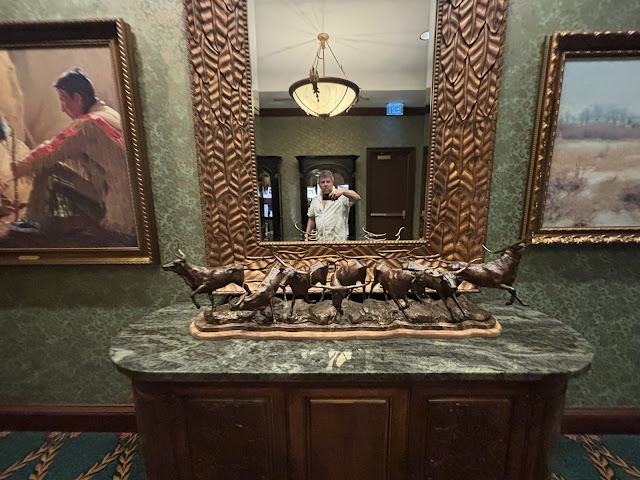







Comments
Post a Comment